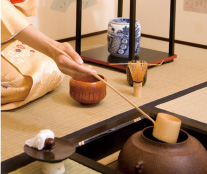Kyoto stimulates all five senses and encourages creative thinking
Wisdom is one of the strengths of Kyoto
What circumstances have established a major accumulation of wisdom in Kyoto?
How does this accumulated wisdom benefit businesses located in Kyoto?
We interviewed Mr. Shinji ASONUMA, EXECUTIVE VICE PRESIDENT, INDUSTRY-GOVERNMENT-ACADEMIA COLLABORATION, KYOTO UNIVERSITY.
Kyoto, a city of accumulated wisdom
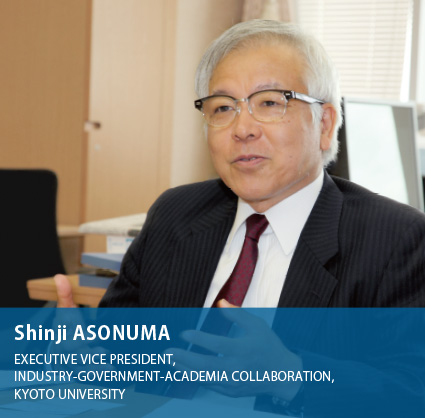
Why has Kyoto become a city of accumulated wisdom? There are three factors that can be construed as special features of Kyoto.
The first factor is the natural environment of Kyoto. Kyoto is a basin surrounded by mountains on three sides. Kyoto has four distinct seasons that are highly typical of Japan. I believe that this climate has nourished the fine senses of the people of Kyoto.
The second factor is the long history of Kyoto. Kyoto was the capital and center of Japan for more than 1000 years. An intense pioneer spirit has been inherited in Kyoto, which encouraged local people to construct primary schools at their own cost before the national government established a primary education system, and to operate the first train in Japan. Kyoto people are ready to do what they want by themselves, not under the control of the powers of the time. This spirit has also nourished a sophisticated culture in various aspects of Kyoto, and stimulated the five senses of local people.
As the third factor, Kyoto is one of the major religious cities of the world. Kyoto has an extremely large number of temples and shrines. As a religious city, Kyoto is filled with the pursuit of universality and with abstract thoughts and concepts. The world of sophisticated sensitivity co-exists with the world of intellectual and logical thinking.
In this way, history, culture and religion are accumulated in multiple layers over the unique climate of Kyoto. These factors enabled diverse elements to be blended with each other, producing unique awareness and creative thinking. There is no doubt that this power of Kyoto has provided a base for so many Nobel Prize and Fields Medal laureates.
Kyoto as an up-to-date academic, cultural and research city

In 2015, the International Science Innovation Building (ISIB) was completed in the Yoshida Campus of Kyoto University. This building is aimed at creating new value based on wisdom accumulated in Kyoto University, by housing together, and facilitating exchange among, organizations related to industry-government-academia collaboration, including the Office of Society-Academia Collaboration for Innovation, Japanese and international educational and research institutions, Kyoto prefectural and municipal agencies, business firms and other organizations
Unlike in conventional industry-academia collaboration, where specific laboratories and business firms typically undertake joint research, ISIB also promotes comprehensive collaboration between businesses, where the two parties start by examining what research can be jointly undertaken.
As the economy and other factors in society become increasingly uncertain, it will become more common that universities and businesses jointly examine the division of roles between them, on an organizational basis.
Kyoto is not a mere tourist city that is only visited by tourists for its historic establishments, but also an up-to-date academic, cultural and research city. Kyoto University hopes to remain a university that issues challenges, supported by the power of Kyoto. We hope that you will fully utilize ISIB as a forum for industry-government-academia collaboration.
Nobel Prize laureates related to Kyoto
- Hideki Yukawa1949,
Physics - Shinichiro Tomonaga1965,
Physics - Leo Esaki1973,
Physics - Kenichi Fukui1981,
Chemistry - Susumu Tonegawa1987,
Physiology/Medicine - Ryoji Noyori2001,
Chemistry - Koichi Tanaka2002,
Chemistry - Makoto Kobayashi2008,
Physics - Toshihide Masukawa2008,
Physics - Osamu Shimomura2008,
Chemistry - Shinya Yamanaka2012,
Physiology/Medicine - Isamu Akasaki2014,
Physics - Yoshinori Osumi2016,
Physiology/Medicine - Tasuku Honjo2018,
Physiology/Medicine - Akira Yoshino2019,
Chemistry
Universities in Kyoto deliver state-of-the-art research achievements
- 7 national/public universities and 41 private universities,
including Kyoto University and Kyoto Prefectural University - 6000 university students per 100,000 population
(the highest ratio in Japan) - 5000 students specializing in sciences graduate every year
- 7000 international students
- The whole of Kyoto is like a university campus
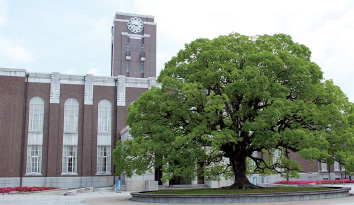
Center for iPS Cell Research and Application, Kyoto University
- A pioneering core research institute headed by Professor Shinya Yamanaka, a 2012 Nobel Prize laureate
- Undertakes a broad spectrum of research activities toward the application of iPS cells to medical practice
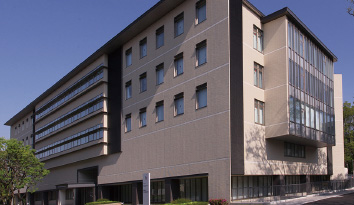
International Science Innovation Building, Kyoto University
- An innovation facility established in the Yoshida Campus of Kyoto University in 2015
- Creates new wisdom and value through exchange between Kyoto University and businesses and public organizations from Japan and overseas
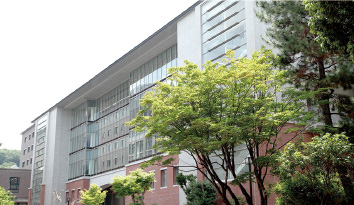
Tradition|[Wisdom]|Innovation
Photos provided / with the cooperation of:Kyoto University



